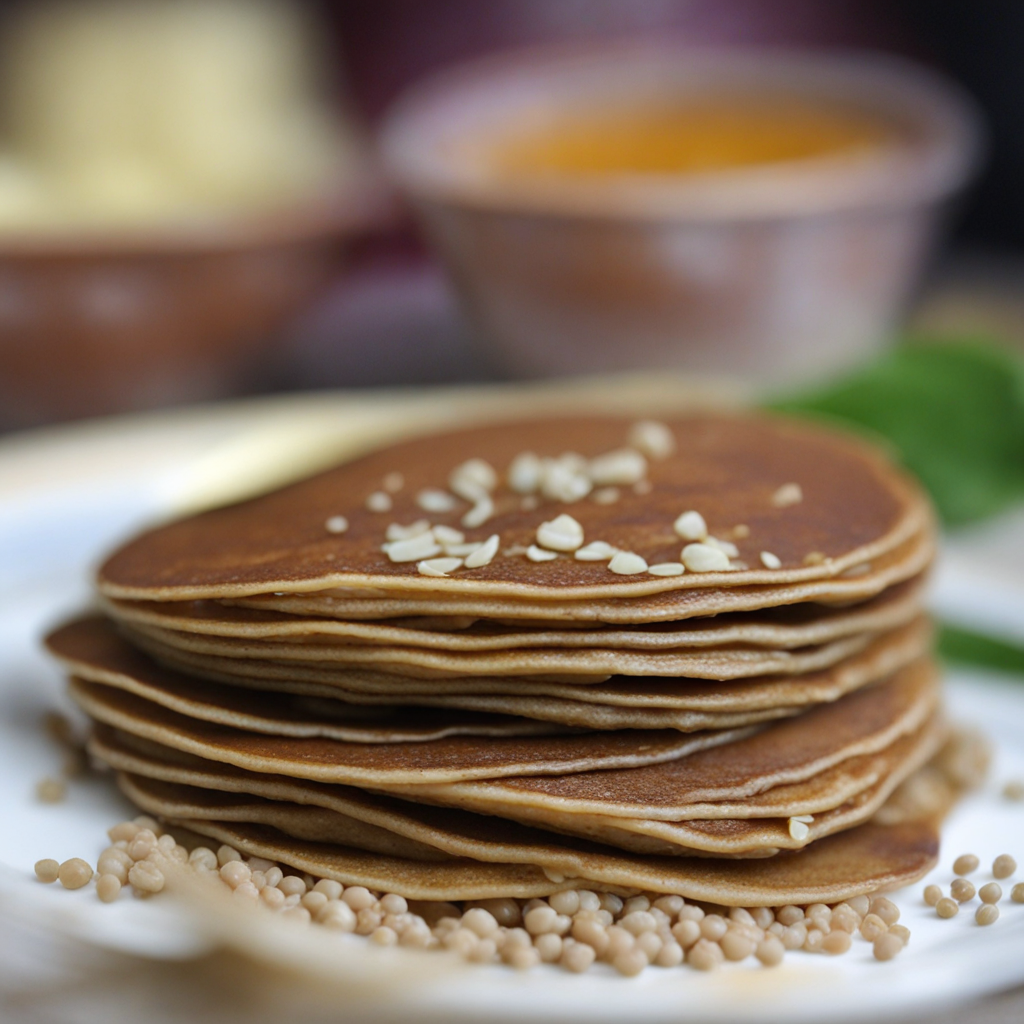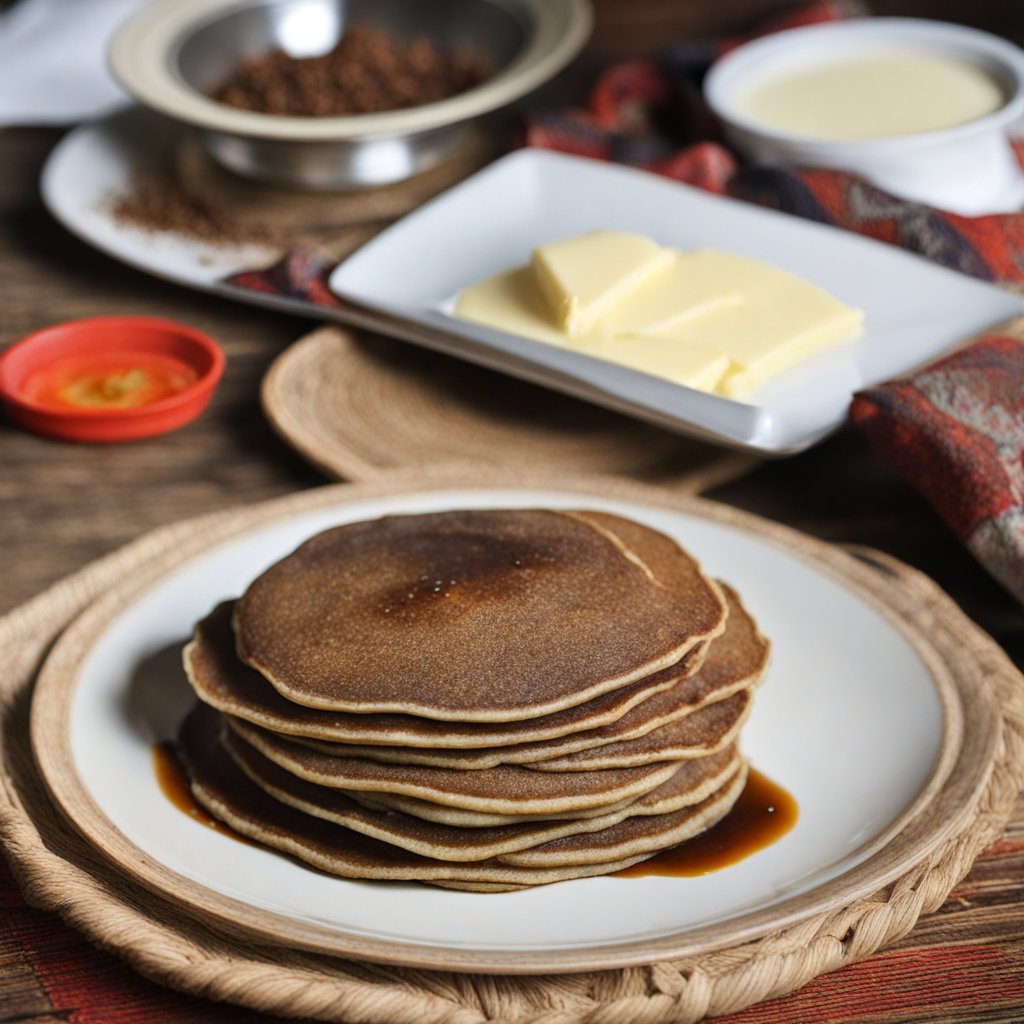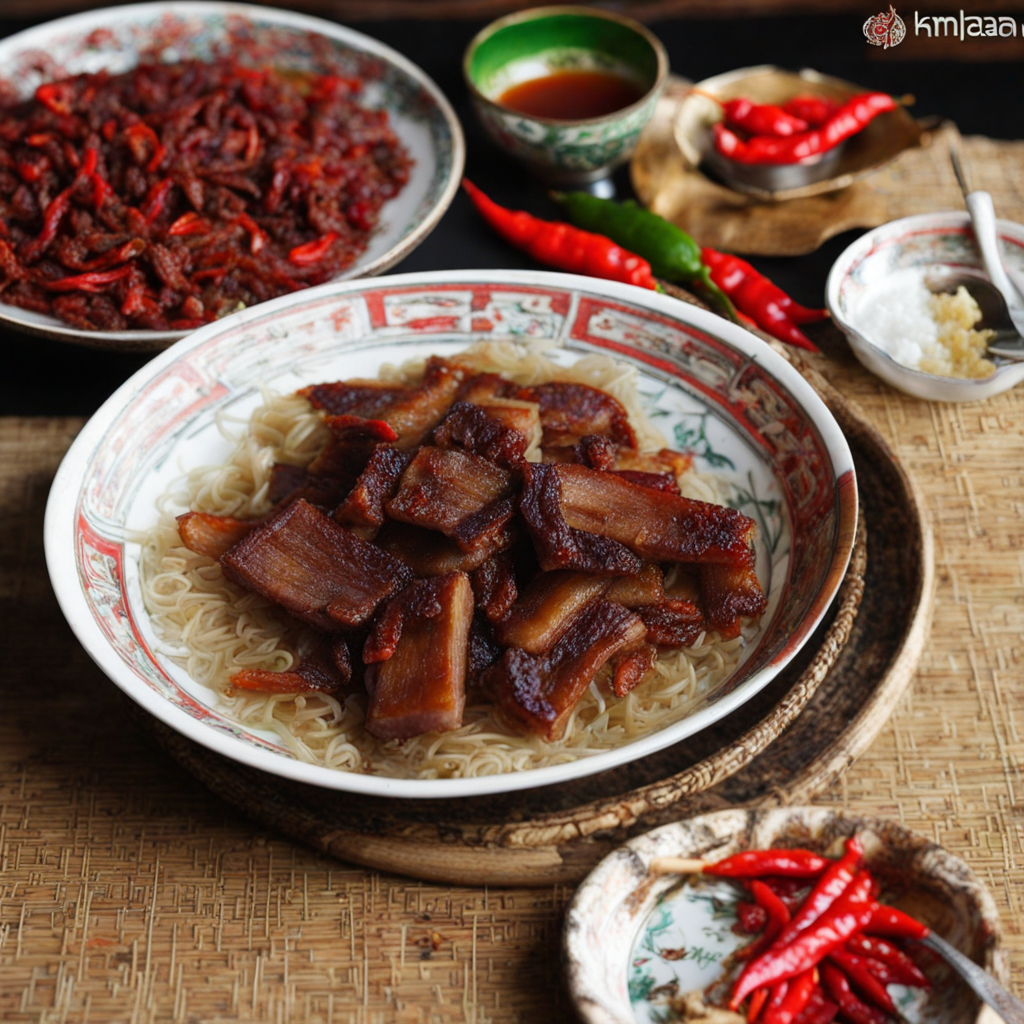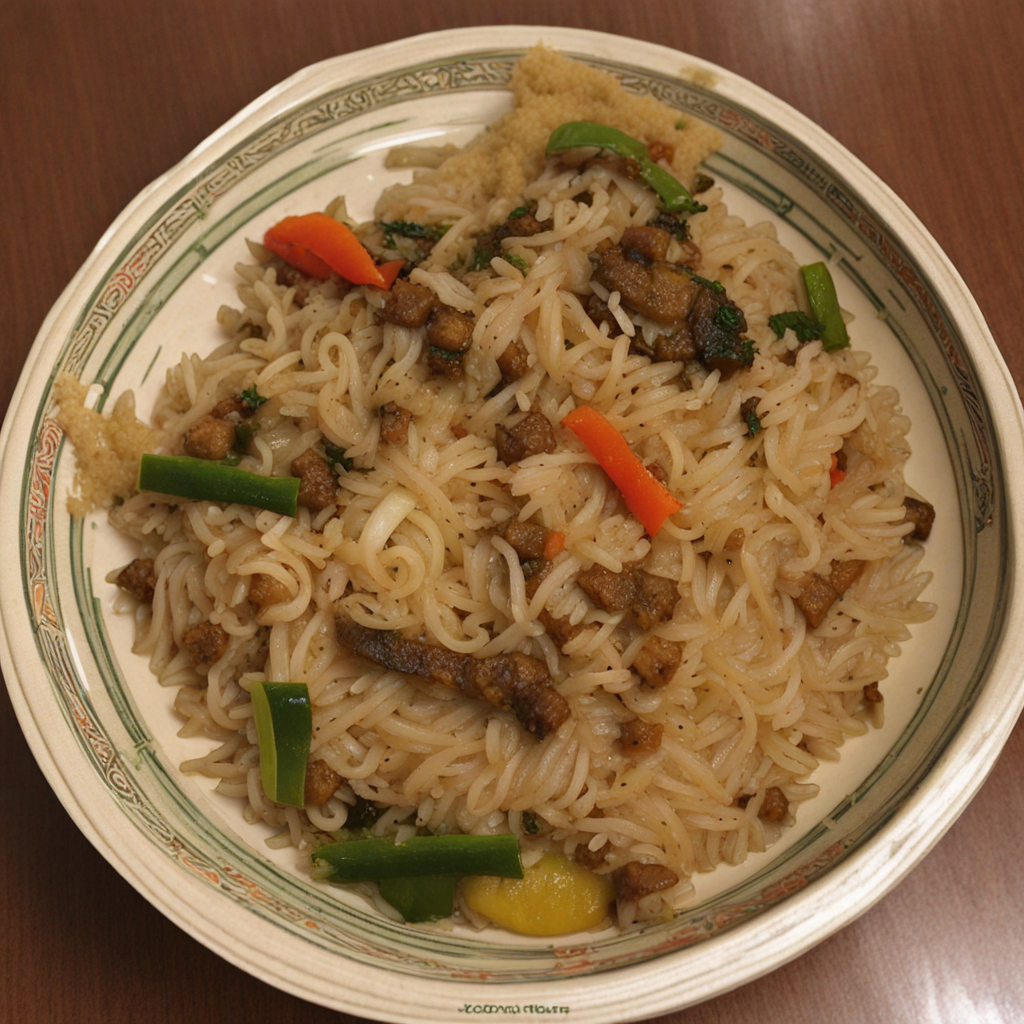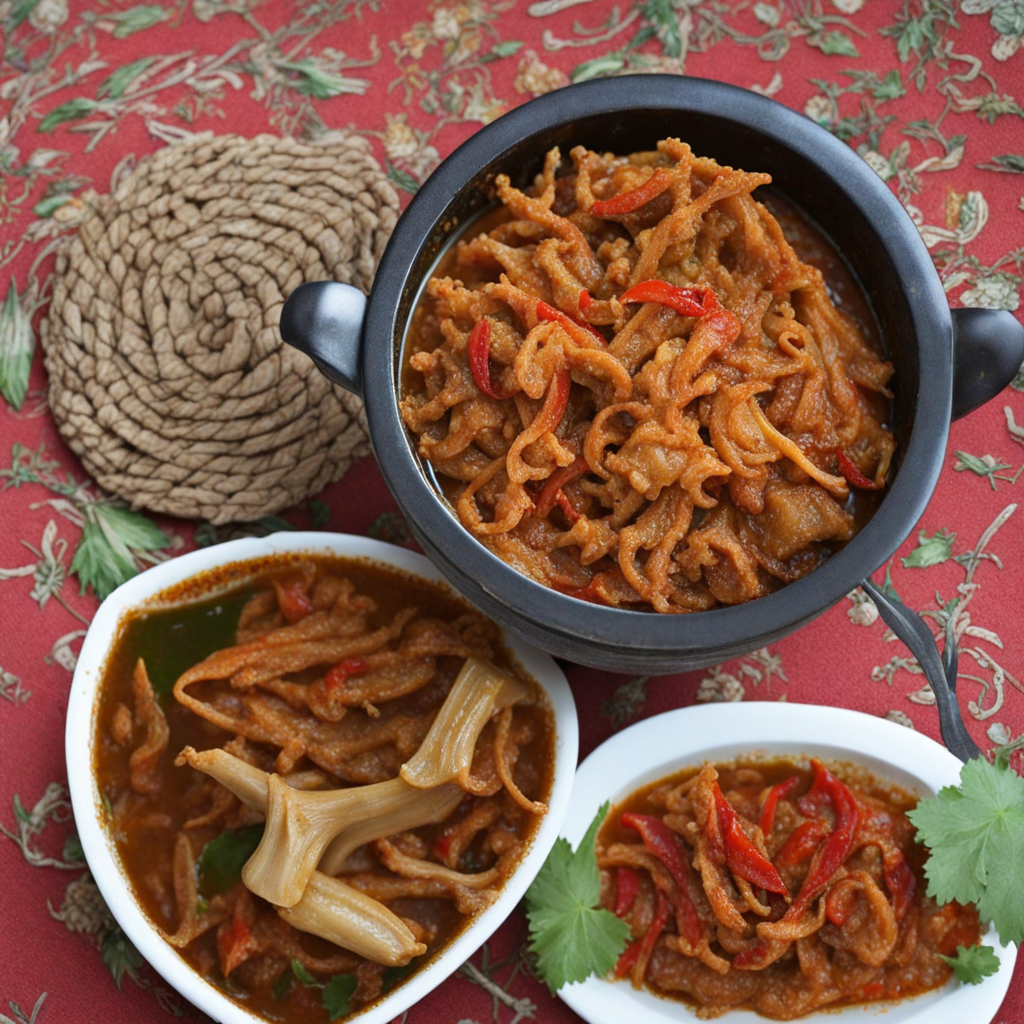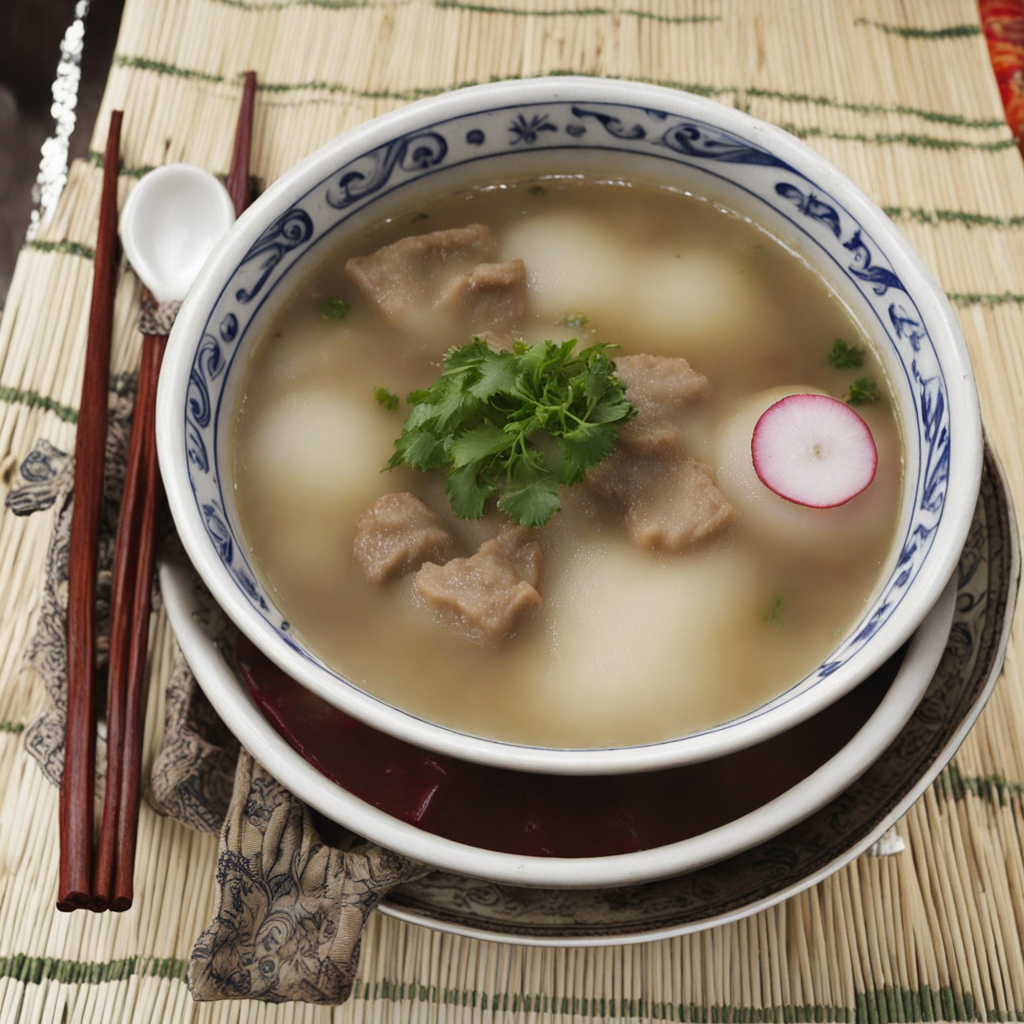Khur-le
Khur-le is a traditional Bhutanese dish that offers a unique taste experience, characterized by its vibrant flavors and wholesome ingredients. At its core, Khur-le is a type of rice dish, often prepared with a blend of aromatic spices, vegetables, and sometimes meat, reflecting the country's rich agricultural heritage. The rice used is typically locally grown, giving it a distinct texture and flavor that sets it apart from other rice varieties. The dish is often complemented with a spicy chili sauce, adding a kick that Bhutanese cuisine is renowned for, making every bite a delightful exploration of heat and flavor.
How It Became This Dish
The History of 'ཁུར་ལེ།' (Khule) from Bhutan: A Culinary Journey #### Introduction 'ཁུར་ལེ།' (Khule), a traditional dish from Bhutan, is more than just a staple food; it encapsulates the rich tapestry of Bhutanese culture, history, and agricultural practices. This unique dish, often made from puffed rice and various accompaniments, reflects the harmony of Bhutan’s natural resources and the ingenuity of its people. To truly appreciate Khule, we must delve into its origins, cultural significance, and its evolution over time. #### Origins of Khule The origins of Khule can be traced back to the ancient agricultural practices of the Bhutanese people. Rice, particularly red rice, is a staple in Bhutan, known for its nutritional value and resilience in the country’s diverse climates. The process of puffing rice has roots in the region’s traditional food preservation techniques. Originally, puffing rice was a method to enhance the rice’s shelf life and make it more palatable. The technique involves heating rice in a specialized vessel, causing it to expand and become light and airy. This process not only made the rice easier to transport but also allowed it to be mixed with various ingredients, leading to the creation of Khule. The dish is believed to have been consumed by farmers and laborers, providing them with a quick source of energy during long working hours in the fields. #### Cultural Significance Khule holds a special place in Bhutanese culture. Traditionally, it is often prepared during festivals, ceremonies, and communal gatherings, symbolizing togetherness and sharing. The light, crispy texture of Khule makes it an ideal dish for social occasions. It is usually served with a variety of toppings — from dried fruits and nuts to chili and cheese — allowing for personalization based on regional tastes and individual preferences. In Bhutan, food is more than sustenance; it is deeply intertwined with the social fabric of the community. Khule serves as a medium for storytelling and connection. Families often gather to prepare and enjoy this dish, reinforcing bonds and passing down culinary traditions from one generation to the next. Moreover, Khule is often linked to the concept of 'Zhabdrung Ngawang Namgyal', the unifier of Bhutan, who is said to have enjoyed this dish. This association with historical figures further elevates the dish’s status within the cultural narrative of Bhutan. #### Development Over Time As Bhutan has evolved, so too has the preparation and consumption of Khule. In the past, the dish was primarily a rural staple, enjoyed by farmers and laborers. However, with the growth of urban centers and the influence of globalization, Khule has found new life in Bhutanese cities. In urban areas, Khule has been adapted to suit contemporary tastes and lifestyles. It is not uncommon to find Khule served in modern cafes and restaurants, often accompanied by fusion ingredients that reflect a blend of traditional and global culinary practices. For instance, chefs may incorporate elements such as olive oil, exotic spices, or even sauces inspired by international cuisines, transforming Khule into a versatile dish that appeals to a broader audience. The rise of tourism in Bhutan has also played a role in the evolution of Khule. Tourists are often introduced to this dish through cultural experiences and cooking classes, sparking interest in its preparation and traditional significance. As more visitors come to appreciate Bhutanese cuisine, Khule has become a symbol of Bhutan's culinary identity, showcasing the country’s rich agricultural heritage and its emphasis on community and sustainability. #### Ingredients and Variations The beauty of Khule lies in its versatility. While the base ingredient is puffed rice, the dish can be customized with a variety of toppings and accompaniments. In rural areas, it may be served with dried fish, pickled vegetables, or local cheeses. In urban settings, it is often enhanced with gourmet ingredients like fresh herbs, gourmet cheeses, and artisanal nuts. Some popular variations of Khule include: 1. Khule with Ema Datshi: This version incorporates the famous Bhutanese chili and cheese dish, Ema Datshi, adding a spicy and creamy element to the crispy rice. 2. Sweet Khule: Often enjoyed as a snack, this variation includes honey, dried fruits, and nuts, making it a perfect treat for children and those with a sweet tooth. 3. Khule Salad: A contemporary twist where puffed rice is mixed with fresh vegetables, herbs, and a tangy dressing, transforming it into a light and refreshing salad option. #### Modern Relevance and Future Prospects In today’s fast-paced world, where convenience often trumps tradition, Khule remains a reminder of Bhutan’s culinary roots. Many Bhutanese are increasingly aware of the importance of preserving traditional foods, leading to a resurgence of interest in local ingredients and cooking methods. The promotion of organic farming in Bhutan has also aided in the revival of traditional dishes like Khule. As more people seek out locally-sourced and sustainable food options, Khule stands out as an ideal choice, embodying the principles of Bhutan's commitment to Gross National Happiness and environmental sustainability. Furthermore, with the growing global interest in Bhutanese cuisine, Khule has the potential to gain international recognition. Its simplicity, nutritional value, and adaptability make it a candidate for global culinary trends that prioritize health and sustainability. #### Conclusion Khule is more than just a dish; it is a reflection of Bhutan's history, culture, and the enduring spirit of its people. From its humble beginnings as a farmer's food to its place on the tables of urban cafes, Khule embodies the evolution of Bhutanese cuisine, showcasing the country’s agricultural wealth and community-oriented values. As Bhutan continues to navigate the complexities of modernity while honoring its traditions, Khule will undoubtedly remain a cherished part of its culinary landscape, serving as a bridge between the past and the future.
You may like
Discover local flavors from Bhutan


